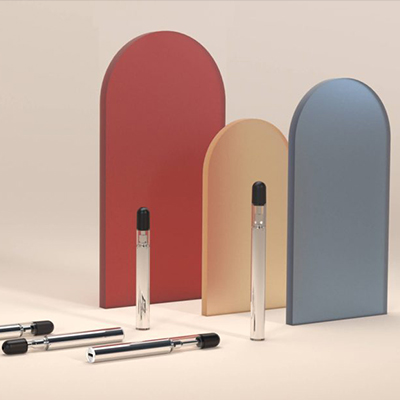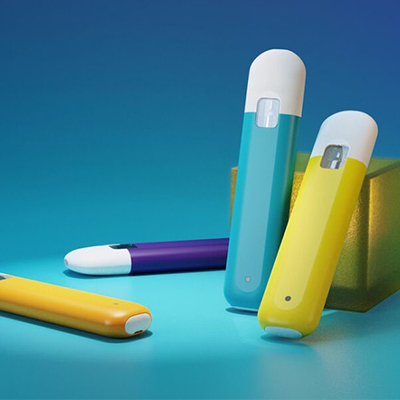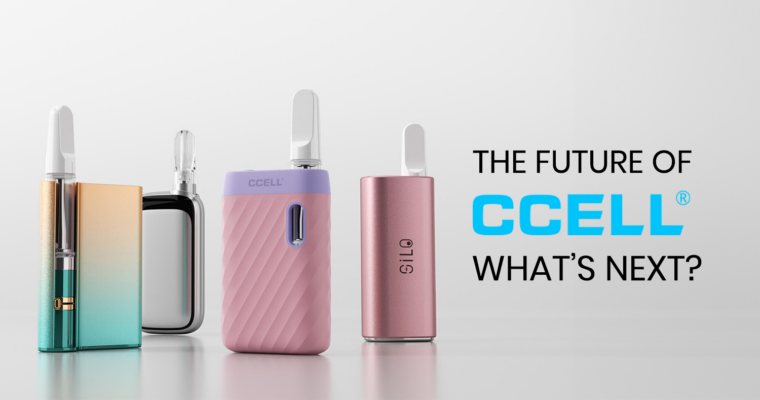Tetrahydrocannabiphorol (THC-P) is a novel cannabinoid that was first discovered in an Italian laboratory in 2019. Although it has a molecular structure similar to that of Delta-9-tetrahydrocannabinol (Delta-9 THC), it has a carbon side chain consisting of seven atoms rather than the five carbon atoms in the side chain of Delta-8, Delta-9 and Delta-10 THC.
Lab tests suggest that the longer side chain may allow THC-P to bind to the body’s CB-1 receptors over 30 times as strongly as Delta-9, producing extremely potent effects. That should get your attention if you’re a serious cannabis aficionado in search of an elevating new experience. Early subjective reports from users suggest that THC-P feels about 5-10 times stronger than Delta-9, meaning that a few puffs from a THC-P vape cartridge paired with a good 510 vape battery could send you straight to the moon.
If you’re ready to take your cannabinoid explorations to the next level, this is the guide for you. Reading it, you’re going to learn what makes THC-P different from other cannabinoids and what you can expect the effects of THC-P to be when you use it. You’re also going to learn about the potential THC-P side effects and about the legality of this novel cannabinoid. Let’s dive in!
What Kind of Cannabinoid Is THC-P?
As mentioned in this article’s introduction, THC-P is distinct from Delta-9 THC in that it has a side chain of seven carbon atoms rather than the usual five. It’s possible that the longer side chain acts as a sort of “key” giving the cannabinoid a greater affinity for the body’s CB-1 receptors, as preliminary lab tests have suggested that THC-P binds to the receptors roughly 30 times more efficiently than Delta-9.
It’s important to mention that there is probably a limit to how much THC the body can process at one time. For that reason, you shouldn’t expect THC-P to be 30 times as potent as Delta-9. As we mentioned above, anecdotal reports from users suggest that THC-P has around 5-10 times the potency of Delta-9. User reports are highly subjective, though, so it’ll be necessary for you to come to your own conclusion.
Interestingly, it’s been speculated that THC-P could be the reason why some cannabis strains are inexplicably much stronger than others despite having around the same Delta-9 THC content. After all, laboratories couldn’t test cannabis strains for THC-P until they knew what it was and how to detect it. This is almost certainly an area of cannabis genetics that’s ripe for further exploration.
How Is THC-P Made?
THC-P was first discovered in and isolated from cannabis flowers. It occurs naturally in cannabis, but it’s not plentiful enough to make direct extraction economical or practical. For that reason, THC-P is produced in a laboratory setting in a process called isomerization. It’s much the same as the process used to produce other novel cannabinoids such as THC-B, THC-O and HHC-P. Here’s a summary of how THC-P is made.
- Hemp plants are grown, and their flowers are harvested and sent to a hemp processing center. The hemp processor uses a carbon dioxide extraction machine to collect the essential oils from the flowers.
- The hemp distillate is filtered and refined to separate the CBD content from the other cannabinoids. CBD isolate – which is over 99 percent pure – is the starting point of the isomerization process.
- The CBD isolate is combined with chemical catalysts and solvents that reorganize its molecular structure, leaving THC-P distillate as the final product. The current isomerization technology has a very high conversion rate of around 85 percent.
- After the conversion is complete, the chemical catalysts and solvents are removed, and the final product is sent to a laboratory for analysis. The analysis verifies the cannabinoid content and confirms that the final product contains no unwanted residual chemicals.
What Are the Effects of THC-P?
When we discuss the effects of THC-P, it’s important to note that this is a novel cannabinoid and hasn’t yet been researched to any great extent. The majority of the things that you’ll see online about THC-P are simply anecdotal reports from users. That’s true of many novel cannabinoids, but this is different because THC-P products haven’t been on the market long enough for a significant number of user reports to exist.
Because THC-P binds to the body’s endocannabinoid receptors more efficiently than Delta-9 THC, you can generally expect THC-P to have effects similar to those of Delta-9 but at a more potent level. In particular, people who use THC products for sleep assistance and pain relief have reported feeling those effects much more strongly with THC-P. The “couch lock” with THC-P is a real thing, so it’s best to use this cannabinoid only if you don’t intend to go anywhere or do anything for a while.
What Are the Possible Side Effects of THC-P?
If you’re an experienced cannabis user, you know that THC can sometimes have some unwanted side effects if you overdo it. Just like the positive effects of THC-P, the negative side effects may also be stronger if you use more than you should. For that reason, it’s important to start slowly even if you’re a frequent Delta-9 THC user. Remember that you can always use more THC-P if you aren’t experiencing the desired effects, but you can’t take it away after you’ve already inhaled or eaten it.
It’s particularly important to go slowly with THC-P if you’re using edibles. When you use an oil vaporizer, you’ll feel the effects in minutes. With THC-P edibles, on the other hand, it might be up to two hours before the effects begin to peak. You wouldn’t want to eat a second dose when you aren’t feeling the full effects of the first dose yet.
Some of the most commonly reported side effects of THC-P include:
- Dry mouth
- Red eyes and dry eyes
- Paranoia and agitation
- Sleepiness, drowsiness and “couch lock”
- Nausea and vomiting
- Overwhelming physical and mental sensations
As with Delta-9 THC, you can expect any negative side effects of THC-P to fade within a few hours. The effects will take longer to fade with THC-P edibles than with vaped products.
THC-P FAQs
After reading this THC-P guide, are you left with any unanswered questions? Our THC-P FAQ covers the topics that haven’t been answered elsewhere in this guide. If you have any lingering questions, you’ll find the answers here.
What Is THC-P?
THC-P is molecularly similar to Delta-9 THC, but it has a side chain consisting of seven carbon atoms rather than the usual five. Research suggests that the longer side chain gives THC-P a greater binding affinity to the body’s CB-1 receptors, making it more potent than Delta-9.
Does THC-P Get You High?
Yes. THC-P has the same psychoactive effects as Delta-9 THC, and people have subjectively reported that THC-P feels about 5-10 times stronger than Delta-9. Because THC-P is so much more potent than Delta-9, it’s wise to use a small amount until you become familiar with its effects.
How Long Does the THC-P High Last?
If you use a THC-P vape cartridge, the high sets in within minutes and lasts up to about two hours. With THC-P edibles, the high kicks in after about two hours and lasts roughly six hours. You shouldn’t use more THC-P until you’re certain that the effects of the previous dose have peaked.
Is THC-P Safe?
THC-P occurs naturally in cannabis, so you’re already consuming it if you use cannabis. However, THC-P has never been available in an isolated form before now, and its safety has not been studied. It’s important to buy THC-P from a company that tests the purity and potency of its products.
Is THC-P Legal?
Being a derivative of industrial hemp with a Delta-9 THC content less than 0.3 percent, THC-P is federally legal according to the 2018 Farm Bill. It is also legal in most states except those that have specifically banned it or have banned all THC analogs.
THC-O vs. THC-P: What Are the Differences?
THC-O is the acetate form of THC, making it a THC precursor. It has no effects until the body metabolizes it, which can take up to an hour even if you consume it by vaping it. The effects of THC-P, on the other hand, are felt much more quickly. THC-O and THC-P are both more potent than Delta-9 THC.
Summary
Now that you understand what THC-P is, it’s time to decide whether it’s the right cannabinoid for you. As you’ve probably surmised from reading this guide, THC-P is most appropriate for you if you’re an experienced THC user and either aren’t getting enough out of your current experience or want to get the same type of experience while using less material.
If you’re not already a frequent THC user, however, you might want to start with something a bit less potent such as Delta-8.
Regardless of which cannabinoid you ultimately choose, you’ll need a good vaping device if you want to have the best possible experience. Browse our selection of vaporizers and 510 thread batteries now.






